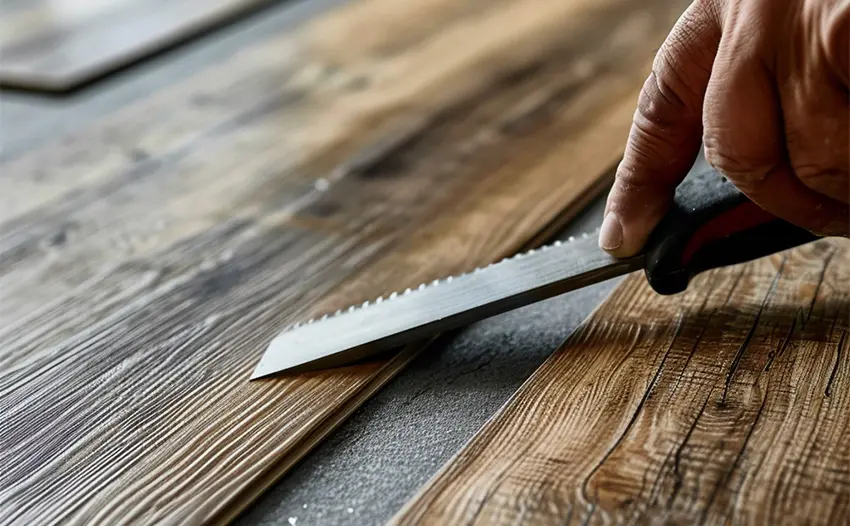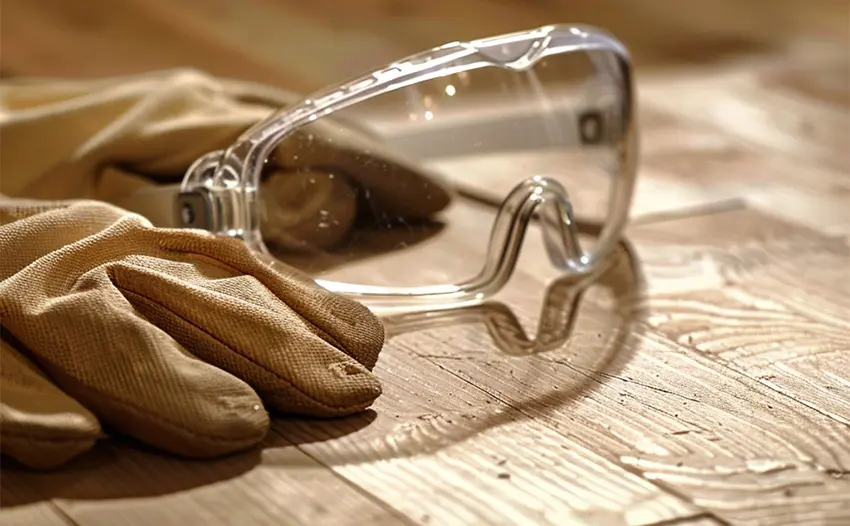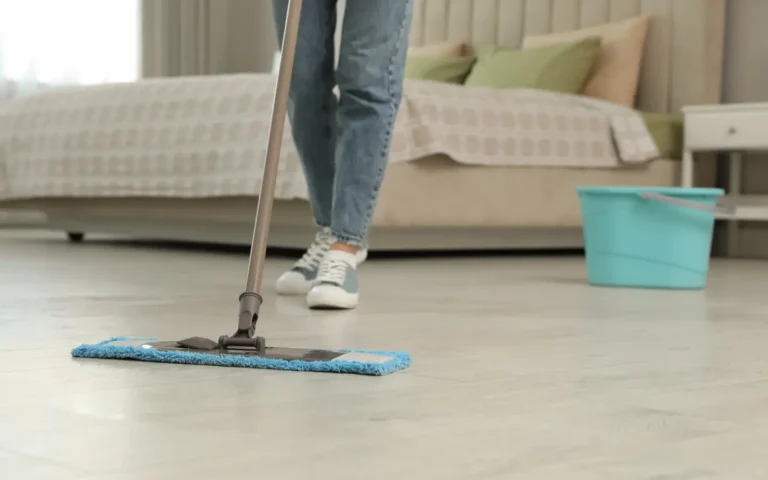Whether you’re working with luxury vinyl plank (LVP), luxury vinyl tile (LVT), or traditional vinyl sheets, the key to flawless installation lies in precise cutting and preparation. This comprehensive step-by-step guide is designed to teach DIY enthusiasts the best way of cutting vinyl flooring like a pro.
From gathering the right tools to making the final adjustments and installation, we’ll cover everything you need to know on how to cut vinyl flooring, so read along!
Step 1: Starting With The Right Tools
Before you start, having the right tools on hand is crucial.
A utility knife is indispensable for making precise cuts in vinyl flooring. It’s much like a chef’s knife in a kitchen – essential for the task at hand and needs to be kept sharp for best results.
The straight edge or T-square acts as your guide, ensuring every cut you make is straight, much as a carpenter uses a ruler to get precise measurements and straight cuts in wood.
You’ll also need a tape measure, which is straightforward to use but very important for accurate measurement of both your room and the vinyl planks or tiles. The pencil or marker will be your marking tool, allowing you to visibly note where cuts need to be made on the vinyl material.
Lastly, don’t overlook safety gear; safety glasses and gloves can protect you from accidental slips or debris.
Step 2: Marking Your Vinyl for Cutting

Once you’ve determined how much flooring you need and the sizes of the pieces, marking the vinyl for cutting is the next step.
Use your tape measure to find the exact points where cuts are needed on your vinyl material. Place a small mark with your pencil or marker at these points. Then, using a straight edge or T-square, draw a line connecting these marks across the vinyl piece. This line is your guideline for cutting, ensuring that your cuts are straight and precise.
The accuracy of this step is critical, as it determines how well your vinyl flooring will fit together and match up with the room’s dimensions.
Best Brands of 2024
Step 3: Making the Cut
For straight cuts, align the straight edge along the line you’ve marked. This tool acts as a guide for your utility knife, ensuring that the cut is straight.
Gently score the vinyl along this line with the knife. You don’t need to apply excessive force; the goal is to create a deep enough score that the vinyl can be easily snapped along this line. This method provides a clean, straight edge that will fit neatly against the other pieces of flooring or the wall.
For curves or intricate shapes, the process requires more finesse. After marking the desired shape on your vinyl, use the utility knife to carefully follow these lines.
It may help to make several smaller cuts, gradually shaping the vinyl to match your markings. This technique is similar to sculpting, where gradual, deliberate removal of material achieves the desired form.
Step 4: Test Fitting Your Piece
Before finalizing your cut piece, place it in the intended spot on your floor to ensure a proper fit. If adjustments are needed, now is the time to trim any excess or reshape slightly to achieve the ideal fit.
This step helps avoid potential gaps or mismatches that could affect the overall appearance and integrity of your flooring installation.
Step 5: Final Adjustments and Installation
With all pieces cut and test-fitted, you can move on to installing the vinyl flooring according to the manufacturer’s instructions.
This process typically involves preparing the subfloor, possibly applying an adhesive, and then laying down each piece of vinyl, ensuring it is securely in place and properly aligned with adjacent pieces.
Additional Tips and Tricks

After familiarizing yourself with the basic steps for cutting vinyl flooring, let’s go over some extra tips and tricks that will help you along the way.
These will further enhance your skill set, so you can make sure that every cut is precise and every piece fits perfectly. All of these tips come from experience so we hope you find them useful and adopt them as they will reflect on the final result.
Advanced Cutting Techniques
- Depth of scoring: Achieving the right depth when scoring vinyl is important. The goal is to penetrate the vinyl deeply enough that it can be easily snapped along the score line, without cutting all the way through. This requires a firm, steady hand and a sharp blade.
The perfect score depth allows for a clean break, minimizing the need for additional trimming.
- Blade management: A sharp blade is essential for clean, effortless cuts. Frequent blade changes are recommended to maintain optimal cutting efficiency. A dull blade can lead to jagged edges, require more force to cut, and increase the risk of accidents.
Keep a supply of blades on hand, and don’t hesitate to replace them at the first sign of dulling.
- Precision in measurement and marking: The accuracy of your measurements and markings directly influences the quality of your cuts. Take time to double-check measurements before marking, and ensure lines are clear and straight. Use a pencil for fine lines that are easy to follow with a utility knife.
For complex shapes or curves, consider creating a cardboard template to guide your cuts.
- Handling complex cuts: For intricate cuts or curves, patience and gradual adjustments are key. Start with a series of small, relief cuts to remove excess material without compromising the shape. Then, carefully follow your marked line, adjusting as necessary to achieve a smooth, precise edge.
Practice on scrap material to build confidence and skill in making these detailed cuts.
Safety and Environmental Adaptation
- Stable cutting surface: Ensure the vinyl plank or tile is securely placed on a stable surface before cutting. This prevents movement that could lead to inaccurate cuts or personal injury. A cutting mat or piece of scrap wood beneath the vinyl can protect your work surface and support a clean cut.
- Environmental considerations: Vinyl material can expand or contract slightly with changes in temperature and humidity. When cutting vinyl for installation, consider the environment it will be placed in. Allowing the vinyl to acclimate to the room’s conditions before installation can reduce the risk of post-installation shifts.
- Protective gear: Safety should never be an afterthought. Always wear protective gear, including safety glasses to guard against flying debris and gloves to protect your hands from cuts. These simple precautions can prevent common injuries associated with cutting materials.
Conclusion
Learning how to cut vinyl flooring is a skill that elevates your DIY project from good to exceptional. By following the detailed steps outlined in this guide – from selecting the right tools and marking your vinyl accurately, to making precise cuts and fitting each piece with care – you’re well on your way to achieving a professional-quality finish in your home.
The additional tips and tricks provided will help refine your technique, ensuring every piece of vinyl fits perfectly, enhancing the durability and appearance of your flooring. Remember, the beauty of a DIY vinyl flooring project lies not just in the transformation of your space, but also in the satisfaction of having completed the work with your own hands.
About The Author

Courtney Daily
February 19, 2024
Courtney is a freelance writer who wears many other hats: kindergarten teacher by day, Broadway diva in the shower. She is a transplant Hoosier who originated in New England. When she isn't writing in her spare time, you will find her reading history books, arguing with her latest knitting project, or being beaten by her kids at most games.




